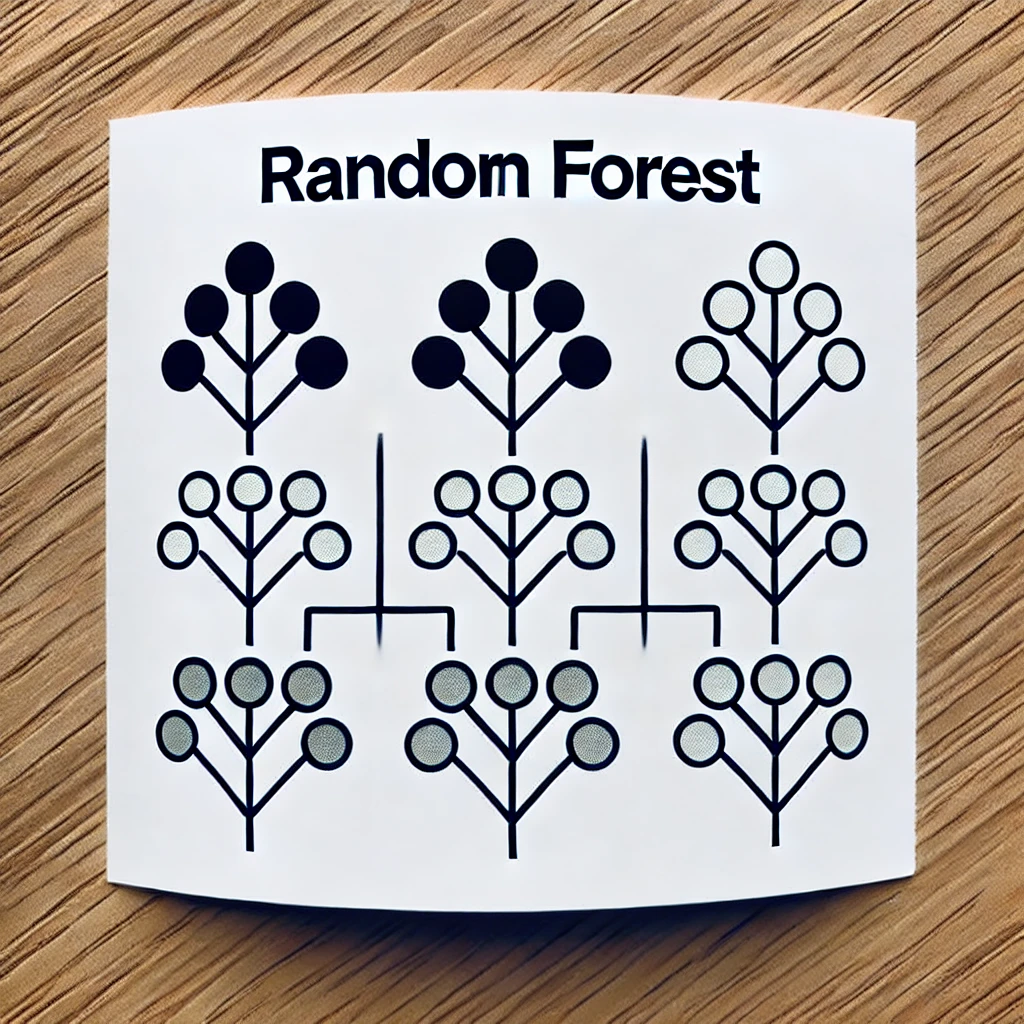5 min to read
The Robust Versatility of Random Forest in Machine Learning
Innovation of Machine Learning

In the diverse ecosystem of machine learning algorithms, the Random Forest stands tall and sturdy, much like its arboreal namesake. It’s an ensemble learning method known for its simplicity, flexibility, and formidable performance across a wide range of problems. At its core, Random Forest is about combining the predictions of multiple decision trees to produce a more accurate and stable model. Unlike a single decision tree which might succumb to the whims of data noise and overfitting, a forest of them is more grounded and less likely to chase after misleading patterns.
Random Forest is akin to a council of elders; each member contributes a vote, and the collective decision is often wiser than that of any individual member. This metaphor is particularly apt in describing how Random Forest mitigates errors from its constituent trees. It’s this collaborative approach that makes Random Forest not just another algorithm in a data scientist’s toolkit, but a go-to strategy for tackling complex predictive tasks.
Whether you’re a seasoned data professional or just starting to wrap your head around the world of machine learning, Random Forest is an approach worth understanding. Its applicability spans classification, regression, and everything in between, providing a reliable path to insights that might otherwise remain obscured within your data.
How Random Forest Works
The real strength of a Random Forest lies in its collective approach. It builds upon the simplicity of decision trees, but rather than relying on a single tree, it creates a forest where each tree is grown from a random sample of the data. This method is known as bootstrap aggregating, or “bagging”. Each tree in a Random Forest is trained on a slightly different set of data and features, making them diverse.
When it’s time to make a prediction, each tree in the forest votes, and the Random Forest takes the majority vote as the final decision for classification tasks, or the average in the case of regression. This process effectively reduces the risk of overfitting – a common pitfall for decision trees – because the errors of individual trees are likely to cancel out when averaged.
But there’s more to Random Forest than just bagging. It also uses feature randomness when splitting a node. This means that the algorithm looks for the best feature among a random subset of features to split on, contributing further to the diversity of the forest. This diversity is crucial – it’s what makes Random Forest models more robust and accurate than individual decision trees.
Key Features of Random Forest
Random Forest boasts several features that make it an attractive choice for machine learning practitioners:
Reduction of Overfitting: By averaging multiple trees, Random Forest reduces the chance of stumbling over specific data quirks that aren’t generalizable.
Feature Importance: Random Forest can identify which features are contributing the most to the decision-making process, which is invaluable for understanding and improving your model.
Versatility: It can handle both regression and classification tasks, and it’s indifferent to the scale of features or whether they’re binary, categorical, or continuous.
Handling Missing Values: Random Forest can handle missing data by using the proximity of the trees to impute missing values effectively.
Robustness to Noise: Because it’s an ensemble of multiple trees, Random Forest can withstand the noise in the data much better than individual decision trees.
Despite these strengths, the algorithm is relatively easy to use and doesn’t require extensive hyperparameter tuning, making it a practical choice for many problems.
Random Forest in Practice
Random Forest’s utility is proven across numerous domains. In the finance sector, it’s used for credit scoring and predicting stock market movements. Healthcare professionals rely on it to identify disease patterns and predict patient outcomes. In the e-commerce space, it helps recommend products to customers and manage inventory by predicting demand.
Another compelling application is in the field of bioinformatics, where Random Forest plays a pivotal role in classifying different types of biological data and identifying disease-associated genes. Its ability to handle large datasets with numerous variables makes it particularly suited for these complex tasks.
Environmental scientists use Random Forest to model and predict deforestation, the spread of invasive species, and the impact of human activities on natural habitats. By integrating various data types, including satellite imagery and ground observations, Random Forest can offer insights that are both precise and comprehensive.
Challenges and Considerations
No algorithm is without its challenges, and Random Forest is no exception. One of the primary considerations when using Random Forest is computational efficiency. Because it requires building and maintaining multiple trees, the algorithm can be computationally intensive, especially with very large datasets and a high number of trees.
Interpretability is another challenge. While individual decision trees are generally easy to interpret, a forest of them can be much more opaque. This can make it difficult to fully understand why the model is making certain decisions, which is a significant drawback for applications requiring explainability.
Furthermore, while Random Forest performs well with a large number of features, it can still struggle if there’s a vast number of irrelevant features, which might dilute the importance of truly relevant ones.
The Future of Ensemble Learning
Looking forward, ensemble methods like Random Forest are poised to remain at the forefront of machine learning. Their ability to synthesize complex patterns and offer robust predictions ensures their continued relevance, especially as we grapple with increasingly complex datasets.
As we march into the future, advances in computing power and algorithmic efficiency may help overcome current limitations, making Random Forest even more powerful and accessible. Additionally, integration with other AI domains, such as deep learning, might give rise to hybrid models that leverage the strengths of both approaches.
The forest is growing, and with it, our capacity to harness the collective decision-making power of multiple models. In the world of machine learning, ensemble methods like Random Forest will undoubtedly continue to thrive, evolve, and inspire new approaches to data-driven problem-solving.




Comments